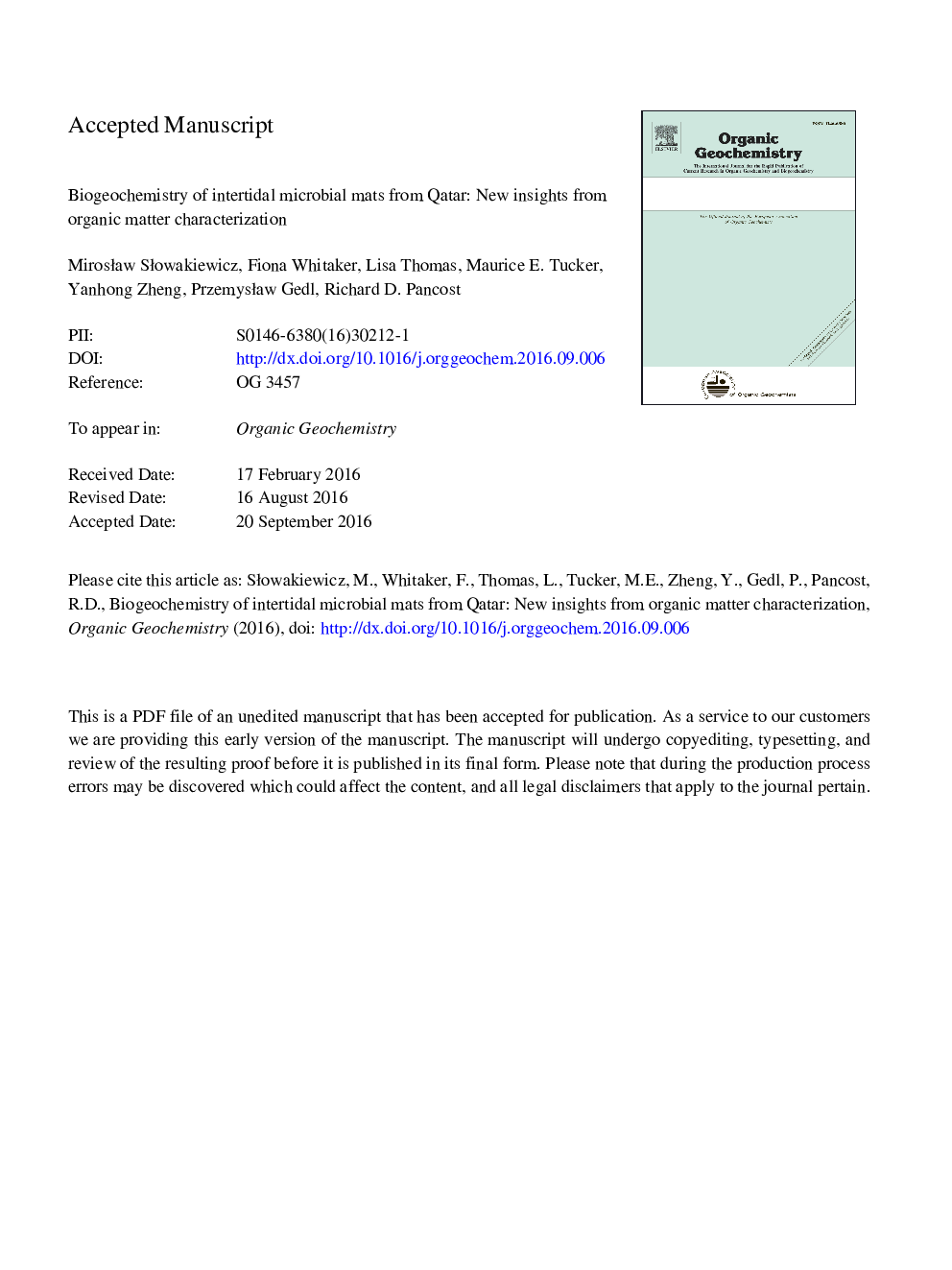| Article ID | Journal | Published Year | Pages | File Type |
|---|---|---|---|---|
| 5161590 | Organic Geochemistry | 2016 | 47 Pages |
Abstract
Understanding early organic matter (OM) alteration and preservation in marine carbonate-evaporite systems could improve understanding of carbon cycling and hydrocarbon source rock prediction in such environments. It is possible that organic-rich microbial mats are important contributors to preserved hydrocarbons and, to explore this, we examined changes in lipid composition in such a mat from a mesohaline intertidal lagoon, eastern Qatar. The mat reaches > 5 cm thickness over a carbonate mud substrate, rich in seagrass, gastropods and other small bioclasts. Clear lamination, with distinct downward colour changes from green to pink to brown, reflects different microbial mat communities. The layers contain spheroids of probable dolomite, the precipitation of which was plausibly bacterially-mediated. Lipids [n-alkanes, fatty acids (FAs), hopanoids, isoprenoid hydrocarbons, dialkyl glycerol diethers (DAGEs), and isoprenoid (0-4) and branched (Ia-IIIa) GDGTs] reflected the diverse mat-building phototrophic, heterotrophic and chemoorganotrophic microorganisms, as well as some likely allochthonous material (i.e. steroids, n-alkanols, high molecular weight n-alkanes). The lipids clearly documented the change in microbial community, with phytene(s) being the predominant hydrocarbon in the phototrophic surface layer. O2 and pH dropped significantly 0.2 cm below the mat surface, coincident with the predominance of Deltaproteobacteria and increased concentrations of archaeal and bacterial glycerol dialkyl glycerol tetraether lipids and C15/C16 and C16/C17 dialkyl glycerol ether lipids in the deeper layers. Archaeol, likely of methanogen origin, was most abundant in the deepest layer. Allochthonous inputs occurred throughout the mat, including abundant steroids, especially dinosterol and dinostanol, possibly related to periodic algal (dinoflagellate) blooms in the Arabian Gulf. Both n-alkanes and n-alkanols appeared to be derived from seagrass. OM content decreased in the deepest mat; this suggests an overall low preservation potential of OM in intertidal mesohaline-hypersaline mats of the Arabian Gulf, which in turn suggests that these are not the major source of hydrocarbons in microbially-dominated carbonate-evaporite systems.
Related Topics
Physical Sciences and Engineering
Chemistry
Organic Chemistry
Authors
MirosÅaw SÅowakiewicz, Fiona Whitaker, Lisa Thomas, Maurice E. Tucker, Yanhong Zheng, PrzemysÅaw Gedl, Richard D. Pancost,
